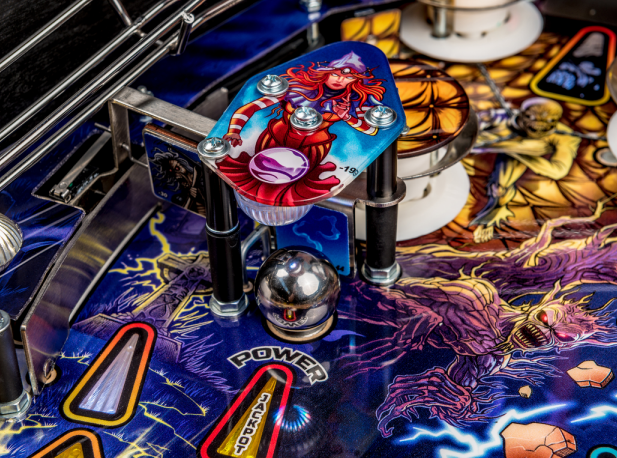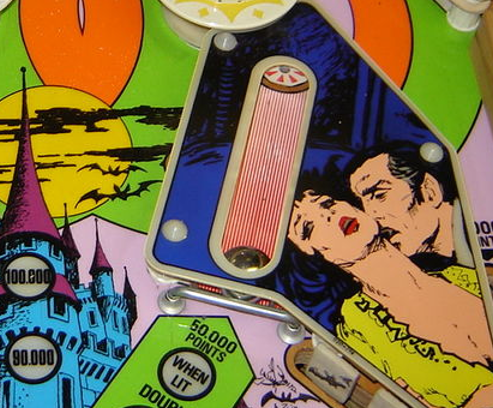Wecoc
Pinball Wizard
- Joined
- Dec 7, 2021
- Messages
- 80
- Reaction score
- 124
- Points
- 40
- Favorite Pinball Machine
- Cirqus Voltaire
In pinball, Newton balls are captive balls that are static. (More so, usually they are in fact metal pegs in the shape of a ball.) When the player's ball hits them, that force passes through the Newton ball to the other side, typically pushing a non-static captive ball.

Newton ball in Breakshot (Image from IPDB)

Three Newton balls and a movable captive ball in Pokerino (Image from IPDB)

Newton ball with a target instead of a captive ball, in Iron Maiden Legacy of the Beast (Image from IPDB)
In Future Pinball, this effect is often recreated using two normal captive balls, but in that case none of them is static; both move back in contact with the player's ball, which is not very realistic. Furthermore, some variants exist of the Newton ball, for example a smaller static ball placed over a little peg.
Using BAM, you can use a trigger in the shape of a ball and some code to get a more realistic effect.
The concept is very simple. When the trigger is hit by the player's ball, BAM reads the current angle and force (ball speed) of that hit and converts it to a resulting angle and force that will be applied to the captive ball.
This concept can be easily applied to other kinds of "Newton objects" that will act basically the same way, like a rail or a rubber. For the rubber case, an invisible wall can be used instead of the trigger.

Newton wire in Mr. Evil, which works exactly like a Newton ball
You can see an example of Newton rubber in the pinball Space Riders.
I made a demo that includes a Newton ball and the wire and rubber variants. Apart from the "mathsy" stuff (which shouldn't require any changes), you should find the code pretty intuitive

Newton ball in Breakshot (Image from IPDB)

Three Newton balls and a movable captive ball in Pokerino (Image from IPDB)

Newton ball with a target instead of a captive ball, in Iron Maiden Legacy of the Beast (Image from IPDB)
In Future Pinball, this effect is often recreated using two normal captive balls, but in that case none of them is static; both move back in contact with the player's ball, which is not very realistic. Furthermore, some variants exist of the Newton ball, for example a smaller static ball placed over a little peg.
Using BAM, you can use a trigger in the shape of a ball and some code to get a more realistic effect.
Note: This would normally be made with a target, but the trigger allows sphere mapping, so it's preferable in this case. Apart from that, they both work the same way.
The concept is very simple. When the trigger is hit by the player's ball, BAM reads the current angle and force (ball speed) of that hit and converts it to a resulting angle and force that will be applied to the captive ball.
Note: Even though it is spherical, the angle of the trigger ball is still important when placing it on the editor, since that is used in the code. The angle should match the face where the player ball will hit the trigger.
This concept can be easily applied to other kinds of "Newton objects" that will act basically the same way, like a rail or a rubber. For the rubber case, an invisible wall can be used instead of the trigger.

Newton wire in Mr. Evil, which works exactly like a Newton ball
You can see an example of Newton rubber in the pinball Space Riders.
I made a demo that includes a Newton ball and the wire and rubber variants. Apart from the "mathsy" stuff (which shouldn't require any changes), you should find the code pretty intuitive
Attachments
Last edited:
